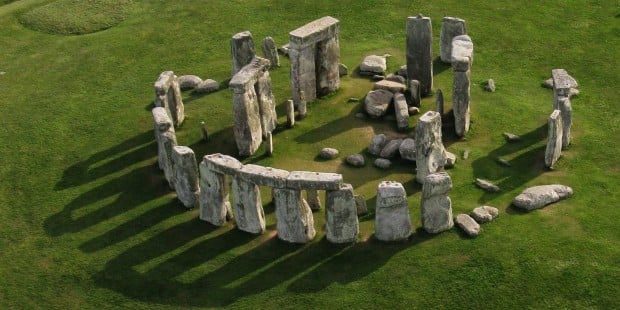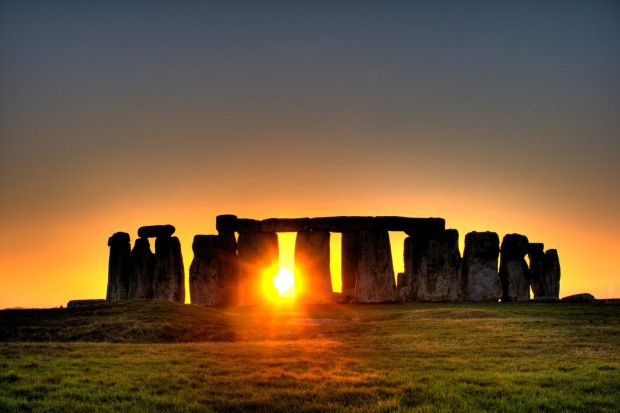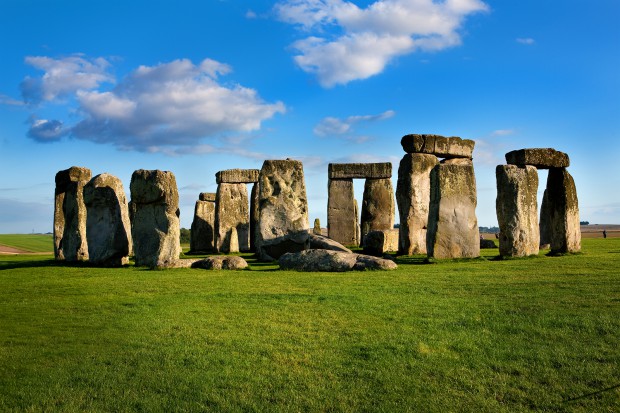What is Stonehenge?
Believed to have been constructed from 3000BC to 2000BC, Stonehenge is a prehistoric circular stone masterpiece. Constructed of immense sizes of stones, ditches and mounds, it is one of the most popular historic wonders of the world. It is the ruins of a ring of stones which stand upright within the ground. Believed to have been constructed in stages spanning at least ,500 years, this grand monument is a massive historic site. The great trilithon, the surrounding horseshoe-like placement of the other five trilithons, as well as the embanked avenue and heel stone are in such an arrangement that they face the winter solstice sunset, and the sunrise of the summer solstice.

Where is Stonehenge Located?
Stonehenge is located in Southern England on the Salisbury plain. Its precise location is in Wiltshire, roughly 3 kilometers west of Amesbury and 13 kilometres north of Salisbury.
The Myth Behind Stonehenge
There are many myths surrounding Stonehenge, but one of the more popular tales is the Arthurian legend attributed to the work of Geoffrey of Monmouth during the 12th Century. His work, Historia Regum Britanniae suggested that the construction of Stonehenge was due in part to Merlin. In his tale, Geoffery suggested that the stones of Stonehenge were to possess healing qualities. The massive stones that which Stonehenge was constructed were believed to have been brought from Africa to Ireland by the Giants.
Aurelius Ambrosius, a 5th Century king desired a monument built in memory of the 3,000 knights slaughtered in the battle of the Saxons. Merlin advised him to select Stonehenge for the location of the memorial. King Ambrosius sent Merlin, Uther Pendragon (King Arthur’s father), along with the aid of 15,000 knights in which to remove the stones from Ireland. The knights were unable to move the stones with their ropes and strength. Merlin, however, was able to dismantle the stones and bring them to their final place of rest-Stonehenge. Geoffrey concludes in his tale that Ambrosius Aurelius, Uther Pendragon, and Constantine III were believed to have been buried within the Giants ‘ring of Stonehenge’. Another myth suggests that Merlin used the Devil’s powers to move the stones from Ireland to Stonehenge.
Why do people visit Stonehenge?
Due in large part to the absence of written history about Stonehenge, very little is known about how the stones were moved, or where they came from. Many myths have arisen as a result of this. People are drawn to Stonehenge based on its mystery, grandeur and historic qualities.

What makes Stonehenge a Popular Tourist Attraction?
Stonehenge is one of the most mysterious wonders of the world. The size and majesty of the monument draws tourists from all over the world to marvel over its splendor. Over 800,000 people visit Stonehenge each year, making it one of the most popular historic sites in the United Kingdom. The myths surrounding the stones are just one of many reasons Stonehenge has long been a popular tourist attraction in the United Kingdom. With many tours available to the public, it is easy to learn about the history of Stonehenge. In addition, a new visitors centre has also been constructed, located about 2 kilometers west of Stonehenge, just off the A360 road in Wiltshire.
Stonemasonry is, as evidenced above, one of the oldest art forms in civilization. DM Gibson is South East England’s leading bespoke hand-carved stone mason. He is able to create gorgeous monuments requiring the finest bespoke craftmanship. With over a quarter century of experience, DM Gibson’s work is sure to impress. Keeping to the highest of standards in bespoke stonemasonry, the work of DM Gibson can be ensured to be the highest of quality.




